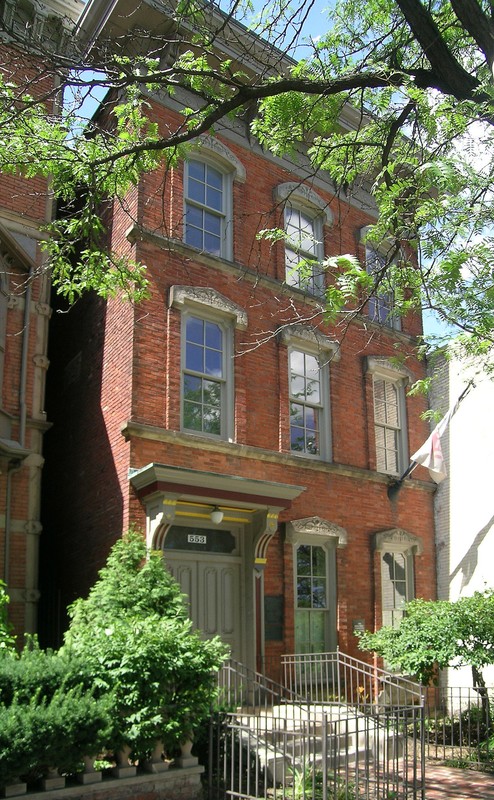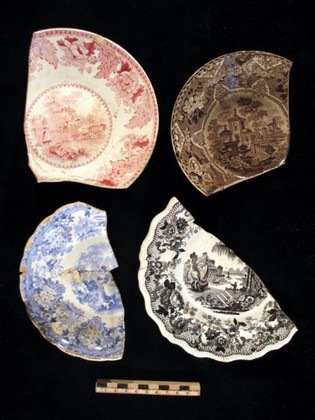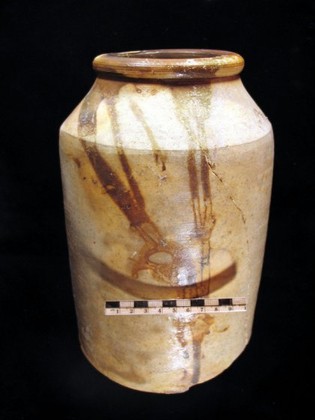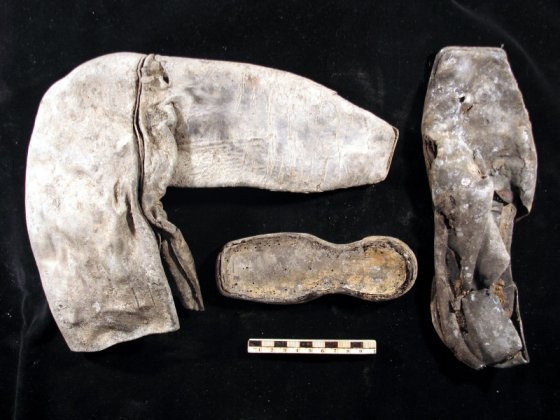Beaubien House Detroit
Introduction
Text-to-speech Audio
Built in 1851, the Beaubien House is one of the oldest homes in Detroit and is located at the site of a former ribbon farm owned by Jean Baptiste Beaubiuen, a French colonist who gained possession of the land around 1740. His son, Colonel Antoine Beaubien, received a patent certificate for the land in 1810. The farm was shaped like a long skinny rectangle, or ribbon, with a quarter-mile frontage on the Detroit River and running three miles inland. This house is now available for rent and is one of the oldest remaining properties in Detroit. The house was designated a Michigan Historic Site in 1975 and on the National Register of Historic Places in 1979.
Images
Beaubien House in Detroit

Transfer Print Plates - These transfer print plates were found at the site of the Beaubien Farm in 1973-1974 by Wayne State University during its archaeological work. Transfer print was prominent in the late 1700’s and replaced the costly, laborious hand painting of ceramics and porcelain. Pieces such as this would be used in family homes for dinner ware.

Stoneware Jug - This stoneware jug was found at the site of the Beaubien Farm excavated by Wayne State University in 1973-1974. These stoneware jugs were used in kitchens to hold food such as butter, meats, and pickled vegetables before the invention of refrigerators. They were made of out stoneware because of its durability and ableness to remain watertight.

Fig (12) Leather Boots and Shoes - Leather Boots and shoes found at the Beaubien family farm site that was excavated in 1973-1974. These boots and shoes were determined to be used by both men and women of the time, as no typical women’s footwear was existent, and can be associated with workmen or laborers.

Backstory and Context
Text-to-speech Audio
The French settlers referred to long narrow farms along a river as "ribbon farms" based on their length and size. These lots had a short side along a waterway on one side and a central road on another, providing a way to cluster homes along a central road while allowing access to water for farming. As the French began colonizing North America, long lots were established using a layout similar to the German system that allowed multiple landowners access to the waterway. Among even access to water, the ribbon farming system increased variation in soil and drainage and also facilitated plowing in terms of minimizing the number of turns needed by the oxen teams to tend the land which resulted in faster plowing times. The layouts of these farms also offered houses to be clustered at the end of the lots, which led to more communication and socialization among the tenants.
After the passing of Jean Baptiste Beaubien, his son Antione Beaubien inherited the eastern half of the farm from his father. Antione Beaubien was a Colonel in the Detroit Militia at the time, and in 1810 he received the patent certificate for his land. The Beaubien family would live and tend the farmland until Antoine Beaubien's death in June of 1850; he would then sell his lot to Charles J. Trombly.
In the early 1970s, the site where the Beabuien family farm was located was excavated to construct part of Detroits Renaissance Center. During the excavation, many artifacts were discovered that date back to the 1800s. This house is now available for rent and is one of the oldest remaining properties in Detroit. The house was designated a Michigan Historic Site in 1975 and on the National Register of Historic Places in 1979.
Sources
- Sewick, Paul. Detroit's Ribbon Farms: Shaping the Future Metropolis, Detroit Urbanism. February 15th 2016. Accessed November 27th 2020. http://detroiturbanism.blogspot.com/2016/02/detroits-ribbon-farms-shaping-future.html.
- Discuss Detroit:, Accessed November 27th 2020. https://detroithistorical.pastperfectonline.com/archive/338C4855-6E31-45FF-92EA-887305208053.
- Ribbon Farms, Encyclopedia of Detroit. Accessed November 27th 2020. https://detroithistorical.org/learn/encyclopedia-of-detroit/ribbon-farms.
- Beaubien House History, AIA Michigan. Accessed November 27th 2020. http://www.aiami.com/beaubien_house_history.
- The Beaubien House. Accessed November 27th 2020. https://thebeaubienhouse.com.
- Taylor, Kent C. Footwear consumption in Nineteenth Detroit: A case study form the Beaubien Privy, Accessed December 8th 2020. https://historicalarchaeologist.files.wordpress.com/2015/02/beaubien_privy_footwear001.pdf.
- Hindman, Leslie. Crocks once used for food, Accessed December 8th 2020. https://www.chicagotribune.com/news/ct-xpm-2002-04-21-0204200370-story.html.
- Moloney, Breanna. Clay Pipes and the Social and Economical Landscape of 19th century Detroit, Accessed December 8th 2020. https://www.academia.edu/5777910/Clay_Pipes_and_the_Social_and_Economic_Landscape_of_19th_Century_Detroit.
- Anoine Beaubien , Accessed December 8th 2020. https://www.geni.com/people/Antoine-Beaubien/6000000021414615292.
- Cadillac Builds a Fort at Detroit and Assigns French Ribbon Farms, July 25th 2017. Accessed December 8th 2020. https://worldhistory.us/american-history/cadillac-builds-a-fort-at-detroit-and-assigns-french-ribbon-farms.php.
- Warns, Kathy. The Farmer takes a wife, children abd to the fields of Monroe and Monroe County, Accessed December 8th 2020. https://monroemichigan.wordpress.com/tag/french-ribbon-farms/.
- French Ribbon Farms in Detroit, Accessed December 8th 2020. https://detroithistorical.org/sites/default/files/lessonPlans/FrenchRibbonFarmsFINAL.pdf.
https://thebeaubienhouse.com
http://www.clas.wayne.edu/Multimedia/anthromuseum/images/Pictures/RenCen/tranferprints1234.jpg
http://www.clas.wayne.edu/Multimedia/anthromuseum/images/Pictures/RenCen/stonewarejug.jpg
http://www.clas.wayne.edu/Multimedia/anthromuseum/images/Pictures/RenCen/leatherbootsandshoes.jpg
